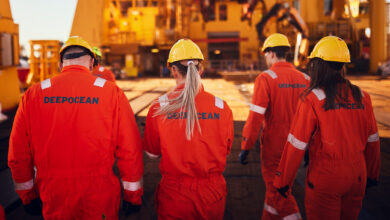McDermott appoints Michael McKelvy as President, CEO
Michael McKelvy has been named President and CEO of McDermott. He will also serve as a member of McDermott’s Board of Directors. Lee McIntire, who has been serving as interim CEO since June 2021, will continue as a member of McDermott’s Board of Directors.
“Michael joins McDermott at a pivotal time for the company as significant contract wins reflect increasing demand for McDermott’s diversified and integrated solutions,” said Nils Larsen, Chairman of McDermott’s Board of Directors. “His track record of international leadership and award-winning engineering, procurement and construction expertise will guide McDermott’s talented global workforce as the momentum builds.”
McKelvy has spent more than three decades working in the engineering and construction industry across the U.S. and international markets, including Europe and the Middle East. He previously led Gilbane Building Company as President and CEO since 2014.
“McDermott’s business model and commercial strategy carve out a unique position to further capitalize on the changing industry dynamics and facilitate the energy transition,” McKelvy said. “I am eager and enthusiastic to join this already-robust leadership team and continue their progress to strengthen the portfolio and forge a new path for the industry.”
Prior to joining Gilbane, McKelvy spent 26 years at CH2M Hill where he held multiple leadership positions and ultimately became Chief Delivery Officer of the company. In this position, he was responsible for project execution across all domestic and global regions with oversight of risk, safety, security, procurement and quality. He spent his early career in operations as an architect and project manager at C.H. Guernsey & Company and Lockwood Greene, which became part of CH2M Hill.
McKelvy currently serves on the Board of Directors for RPS Group PLC, a leading global professional services firm. He holds a BS in environmental design from the University of Oklahoma and a BA from Louisiana Tech University.




